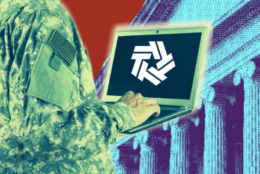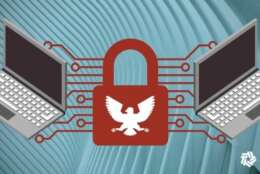Cybersecurity
-
Vincent Sritapan, the Cyber Quality Service Management Office section chief at the Cybersecurity and Infrastructure Security Agency, said agencies and industry can comment on new guidance documents to establish standard cyber configurations.
April 19, 2022 -
In today's Federal Newscast, there’s a new guide for how to report cyber incidents from the Cybersecurity and Infrastructure Security Agency.
April 18, 2022 -
The White House recently received some expert advice about its signature cybersecurity initiative, namely to get every agency to move to zero trust systems architectures.
April 15, 2022 -
Two new cybersecurity courses developed by the Air Force are available to anyone in the Defense Department.
April 14, 2022 -
For decades, cybersecurity meant securing data and endpoints from any number of threats. But what often got left by the wayside was the human element. The shift to zero trust is an acknowledgement of that.
April 12, 2022 -
Agencies embracing DevSecOps tout its potential to enhance communication, customer experience and IT security at every stage of a product’s lifecycle.
April 11, 2022 -
A lot of the data that government produces needs to be rated; safe to distribute, controlled but unclassified, or maybe secret and classified. That's simplifying this huge but never-ending task. Now the Defense Department has launched a challenge prize program to develop an artificial intelligence approach to automating some of this tedious task.
April 08, 2022 -
Pockets of DoD have proven they can produce world-class code, but there's a lot of work ahead to make agile development the norm, the department's first-ever chief software officer says in an exit interview.
April 08, 2022 -
The plans describe how each agency proposes to adopt a zero trust architecture by the end of fiscal year 2024.
April 06, 2022 -
Momentum is building for the shift to zero trust. The Cybersecurity EO, OMB strategy and the Cybersecurity and Infrastructure Security Agency’s Zero Trust Maturity Model form a roadmap for agencies to achieve specific zero trust goals by the end of fiscal year 2024. It’s time to dispel the misconceptions and start moving forward with impactful zero trust strategies.
April 05, 2022 -
The State Department is elevating its cybersecurity mission and is focusing on setting international norms for cyber through its newest bureau.
April 04, 2022 -
Amid concerns about Russian cyber attacks, a new White House office is reviewing federal efforts to secure U.S. critical infrastructure.
April 01, 2022 -
The House and Senate are working to reconcile two bills that would in part move along the cause of cybersecurity in the United States. Both bills, the U.S. Innovation and Competition Act and the America Competes Act, passed the Senate and House respectively.
March 31, 2022 -
Somehow the national debt has managed to reach $28 trillion. But, where is it? It's in a set of electronic schedules maintained by the Treasury Department's Bureau of the Fiscal Service.
March 30, 2022 -
More spending does not necessarily equal better security. As they work to secure our nation's digital infrastructure better, federal organizations must not waste billions of taxpayer dollars on reactive cybersecurity solutions that, in the private sector, have left many organizations with less security and more complex tools to manage.
March 29, 2022













